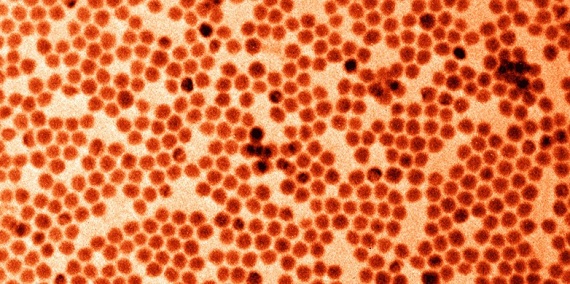Super-battery hope born in Swiss labs
Uniform antimony nanocrystals – capable of storing a great quantity of both lithium and sodium ions – have been created for the first time by researchers at ETH Zurich and Empa.
Such uniform nanocrystals could be of great use in the creation of potential super-high-density batteries thanks to the previously mentioned storage abilities, and a number of other notable qualities.
It’s long been known that antimony was a promising anode material for high-performance lithium-ion batteries – primarily due to its high charging capacity, which is a factor of two higher than the graphite that is currently used, but also due to the fact that it’s suitable for both lithium- and sodium-ion batteries.
There’s an obstacle in the way of antimony’s use for this purpose, though. The high storage capability is only exhibited by a 'special' form – the so-called 'monodisperse' form. This form consists of antimony nanocrystals between 10 and 20 nanometers in size.
That’s where the new work comes in.
The press release from ETH Zurich explains:
One of the other important results of this new work was the identification of “a size-range of around 20 to 100 nanometers within which this material shows excellent, size-independent performance, both in terms of energy density and rate-capability”.
Interestingly, in this size range, even polydisperse antimony particles perform about as well as monodisperse particles – but only so long as their sizes remain within this range.
“This greatly simplifies the task of finding an economically viable synthesis method,” Kovalenko states. “Development of such cost-effective synthesis is the next step for us, together with our industrial partner.”
TEM image (false coloured) of monodisperse antimony nanocrystals.

Source: Maksym Kovalenko Group / ETH Zurich
Something important to note, though – this new material won’t be used commercially for some time. The cost of synthesis is still too high.
“All in all, batteries with sodium-ions and antimony nanocrystals as anodes will only constitute a highly promising alternative to today’s lithium-ion batteries if the costs of producing the batteries will be comparable,” explains Kovalenko.
The researchers guess that it’ll be at least a decade or so before a sodium-ion battery with antimony electrodes could hit the market, as the topic is still in its infancy with regard to research.
“However, other research groups will soon join the efforts,” he notes.
The new findings are detailed in a paper just published in the journal Nano Letters.
Originally published on CleanTechnica. Reproduced with permission.
















